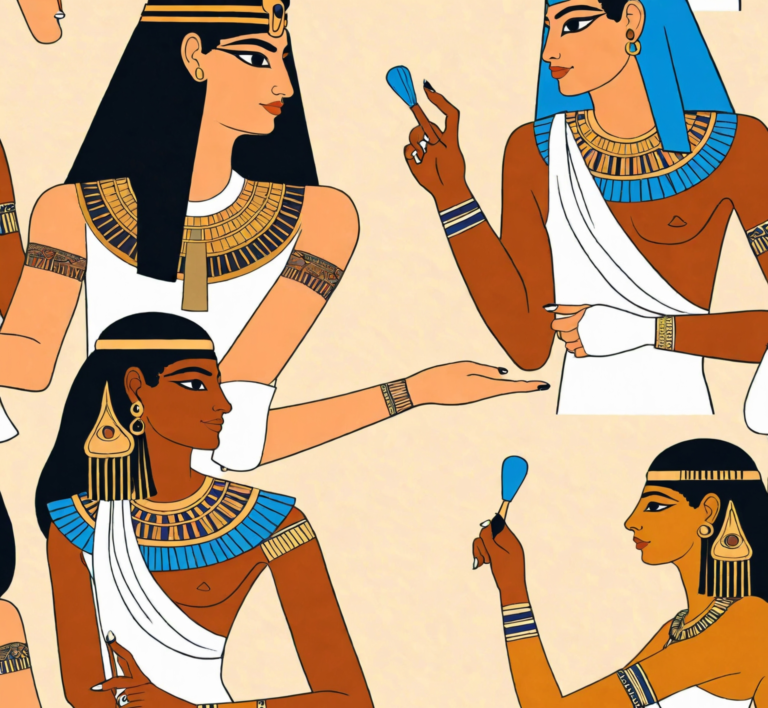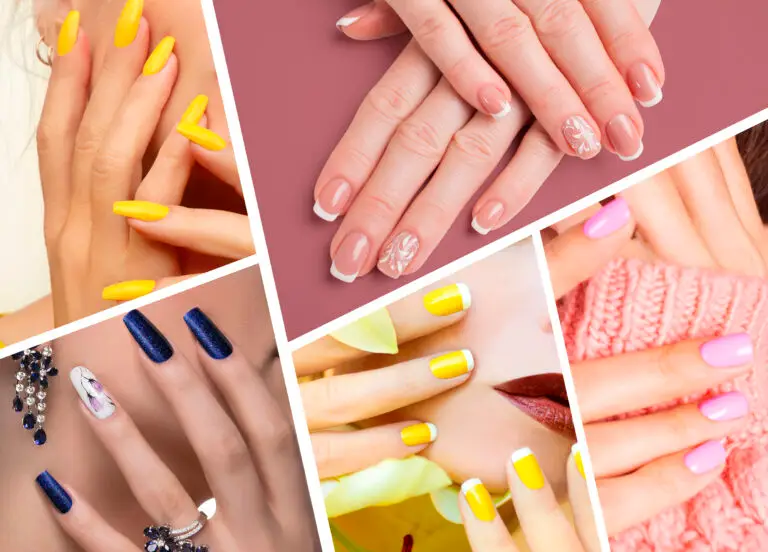What Are Acrylic Nails?
Acrylic nails are artificial nail extensions created by combining a liquid monomer and a powder polymer. This mixture forms a hard protective layer over your natural nails, which can be shaped and styled according to your preference. Acrylics are known for their durability, making them ideal for those who want long-lasting nail enhancements.
Nail art is often seen as a contemporary development when, in reality, it is interwoven with the cultural, social, and spiritual fabrics of ancient civilizations spanning thousands of years. The ancient practices of nail decoration tell a captivating tale of human inventiveness and self-expression. This article explores the deep history of nail decoration in different cultures, emphasizing its importance and the changes it underwent.
History of Acrylic Nails
Nail decoration is believed to have started in Ancient Egypt around 5000 B.C. They regarded nails as a mark of beauty and class. All members of society used to stain their nails with henna, predominantly orange, red, or brown. Fanciful changes to one’s nails became a social statement:
It’s intermixed with other things to create a potent concoction. Henna gives Cleopatra a gleaming appearance like lipstick on nails,
Lower-class citizens were restricted to pale colors, while royalty and the elite flaunted bold, vibrant shades.
Nail decoration in Egypt was more than just an art form; it was also an aspect of profound spirituality. The Egyptians considered carved nails an effective means of protection against evil spirits.
Ancient China: The Origin of Nail Extensions
Nail embellishment was regarded as an indicator of social class in Ancient China (around 3000 BCE). During the Ming Dynasty, Chinese aristocrats grew their nails to incredible lengths to indicate that they did not perform physical work. Long fingernails were invariably protected by gold and silver nail guards to prevent them from breaking.
The Chinese also first introduced the use of natural dyes to paint fingernails. Certain mixtures of beeswax, egg white, gelatin, and flower petals were used to produce vivid colors. Red and black were dominating colors because of their strong symbolism—power and good luck.
Ancient Babylon: Warriors and Nail Paint
Warlords in Ancient Babylon (around 3200 BCE) used to paint their fingernails as a show of intimidation before battle. The men, especially soldiers, put kohl (a black dye) on their nail beds, while the ladies placed green and gold pigments to signify their social rank. The higher one’s social standing, the more intricate the nail paintings.
The art of fake nails has been practiced for thousands of years. In 3000 B.C.E., in Ancient Egypt, men and women commonly used henna to paint their nails, with different colors symbolizing social class. Around 600 B.C.E., a mixture of wax, eggshells, gelatin, and dyes was used to create nail polish in Ancient China. Their forms of polishing nails were in the early stages, which eventually led to the creation of the modern nail industry.

Acrylic Nails Invention:
The idea of artificial nails began to evolve in the early 20th Century. Cutex sold the first nail polish in stores in the 1920s, changing the concept of nail care. However, modern acrylic nails were not invented until the 1950s.
Dr. Fred Slack can be credited for acrylic nails. Being a dentist, he stumbled onto the first artificial nail while trying to fix a broken fingernail in 1954. He crafted a durable and natural-looking replacement using dental acrylic. He unknowingly unlocked the creation of the first acrylic nail products intended for dentists, soon to be used in the beauty industry.
Patti Nails was the first company to manufacture acrylic nail products. Dr. Slack and his brother, Tom Slack, founded this company. Their invention created a revolution in the nail industry and made it possible for acrylic nails to become mainstream.

The 1970s Boom of Acrylic Nails:
Fake nails became commonplace in American salons during the 1970s. Nail technicians in the United States began experimenting with various styles, lengths, and designs, igniting a creative eye-makeup boom. The ease of achieving more dramatic, longer nails was significantly enhanced by nail tips, which are pre-shaped plastic extensions that can be glued onto natural nails.
At this time, acrylic nails represented a glamorous and elegant look. Fashion designers and celebrities also played a substantial role in boosting their popularity. Nail art flourished in the 1970s, with acrylics used to create intricate designs and patterns.
The 1980s and 1990s:The Golden Era for Acrylic Nails
The late 20th century marked the golden era for acrylic nails. This period was characterized by greater attention to airbrushing, the use of neon colors, and geometric patterns. With the introduction of new products like multicolored acrylic powders, creativity soared to new heights.
At this time, acrylic nails began to be accessible to the general public. The proliferation of nail alone in every city and town led to remarkable professionalization within the industry. Along with the ease of access, people began to embrace acrylic nails as a popular trend and a form of personal expression.
The 2000s: Popularization of Nail Art
At the onset of the 2000s, nail art gained global popularity. Nails became a canvas for many artists to showcase their skills and imaginations, using acrylics for intricate designs and 3D embellishments, such as mini sculptures. New design techniques like ombre, marble, and chrome finishes pushed the boundaries of nail art.
Nail art design gained traction from social media, particularly Instagram and Pinterest, during this period. Social networking platforms inspired millions to attempt vibrant and creative designs, serving as showcase venues for nail stylists. The emergence of the 2000s also heralded the rise of notable celebrity nail artists who gained fame on their own merits.
Acrylic Nails Become a Trend in the 2010s
Since the 2010s, acrylic nails have become a widespread beauty trend among the masses. The innovation of products like dip powders and gel-acrylic hybrids further expanded the possibilities for nail enhancements. New styling advances, such as stilettos, coffin nails, and holographic finishes, propelled the progression of nail art.
Nail art and design also began to prioritize nail health in the 2010s. There was a noticeable shift towards maintaining the health of natural nails, creating a heightened demand for less harsh and more nourishing acrylics. Consequently, nail technicians improved their focus on application and removal techniques to minimize the damage caused to natural nails.
Acrylic Nails Throughout the 2020s
Sustainability is a key element as we venture into the 2020s. This emphasis on sustainability arises because several brands are now producing eco-friendly fake nails made from non-toxic, biodegradable materials. Additionally, fake nails are featuring minimalist designs, bold geometric patterns, and multi-textures.
With the growing popularity of at-home acrylic nail kits, an increasing number of people are styling and designing their nails without visiting salons. As a result, many individuals can now achieve salon-quality nail aesthetics from the comfort of their own homes. Professionals within the field continue to maintain their relevance and demand due to their expertise in crafting intricate designs that withstand the test of time.

Conclusion
Fake Nails have shown the world how advanced and creative we can become as a society. They serve as a beautiful example of innovation since the solution began as a dental concern and has now turned into an eye-catching global beautification trend, proving that we can revolutionize so much for the sake of self-expression.
If you are an experienced nail fanatic or someone just getting started, knowing the term and the past of Fake Nails will make it easier to understand their importance in the beauty industry. The next time you get a manicure, think about the journey that led to acrylic nails being available for you to use.
FAQ
ask us
anything
Acrylic is the kind of fibre, plastic and pain made by acid.Acrylic Nails are the Fake nails. They are extensions of preexisting nails made out of a mixture of liquid monomer and powder polymer.
what are acrylic nail extensions?
Acrylic nail extensions, which are made from the fusion of liquid monomer and powder polymer, can be moulded in many different ways. These enhancements allow the nail to grow and extend, giving it a sturdy coating for shaping.
To create acrylic nails, we use a corrosive liquid monomer such as ethyl methacrylate with a powder polymer that forms a tough outer layer which can be moulded and polished to sculpt artificial nail tips.
what is the difference between acrylic nails and gel?
What differentiates acrylic and gel nails is their composition and application methods: Acrylics are mixtures of liquids and powders, while gels are liquid resin cured with UV or LED light, resulting in different textures, strength, flexibility, and visual beauty.
Dr. Fred Slack can be credited for acrylic nails. Being a dentist, he stumbled onto the first artificial nail while trying to fix a broken fingernail in 1954. He crafted a durable and natural-looking replacement using dental acrylic. He unknowingly unlocked the creation of the first acrylic nail products intended for dentists, soon to be used in the beauty industry.Patti Nails was the first company to manufacture acrylic nail products. Dr. Slack and his brother, Tom Slack, founded this company.

Pingback: Blue Nails - Acrylic Haven
Pingback: Red Acrylic Nails - Acrylic Haven
visit our product page…